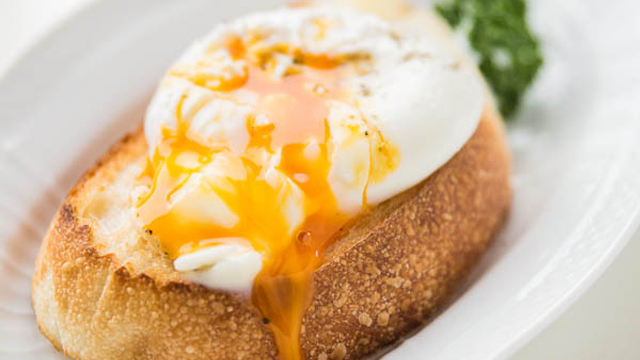
Last week I showed you how to make the perfect scrambled eggs, this week Im going to show you how to make the perfect poached egg.

Poaching an egg poses an interesting quandary because youre adding a liquid to a liquid in the hopes that one of the liquids sets before it mixes with the other. Weve all seen poached eggs with almost no egg white and feathery white foam where the egg white should be. This is because the egg white has mixed with the hot water before setting.
There are a number of things you can do to minimize the amount of egg white that mixes with the water to make a poached egg with most of the egg white in tact. Here are my tricks for getting the perfect poached egg:

Four Tips for How to Poach an Egg
- Reduce turbulence in the water to prevent the egg white from mixing with the water. If you drop an egg into a bowl of water and shake it, or stir it, its going to mix with the water much faster than if you just let it sit. The same thing applies when making poached eggs. The very action of dropping an egg into the water creates turbulence as the water in the pot is displaced. Instead, crack your eggs into ramekins or small bowls, then lower the entire bowl into the water and tip the egg out into the water. Since the bowl displaces the water first, you create much less turbulence when the egg enters the water.

- Hotter water sets egg whites faster. If you read the last tip though, youre probably wondering about the turbulence that boiling water creates, and youre absolutely right. Dropping an egg into water at a rolling boil will create a mess. Since water turns to steam at the boiling point you wont be able to get it any hotter than 212 degrees F, (at sea level), but you want to get it as close to the boiling temperature as possible without actually boiling the water. The best way to do this is to bring the water to a rolling boil first, then lower the heat to maintain a gentle simmer. The temperature of the water will be just a hair under 212 degrees, and the water will be nearly still.
- Vinegar lowers the coagulation temperature of the proteins in egg whites. This quickly sets the outside surface of the egg forming a skin that prevents the whites from feathering out into the water.
- Fresh eggs have a more viscous white which helps keep it together when you add it to the water. Old eggs tend to have watery whites, which are much harder to keep from feathering.

Poached Eggs

Silky, smooth egg whites and a runny yolk are all you need to achieve when poaching an egg. This recipe helps you perfect those textures using four special tips. Marc Matsumoto of NoRecipes shares this recipe in a full post at the Fresh Tastes Blog.
- 4 eggs
- 1 tablespoon vinegar (cheap stuff will do)
Ingredients
- Add 2” of water to a large pot of water, then add the vinegar. Cover with a lid and bring to a rolling boil over high heat. Meanwhile crack the eggs into 4 small bowls or ramekins.
- When the water is at a rolling boil, remove the lid, and turn down the heat so there are still bubbles forming at the bottom of the pot, but the surface of the water is still. Carefully lower the ramekins into the water and tip the eggs out into the hot water one at a time.
- Leave the eggs to cook undisturbed until they are cooked to your liking. You can test for this by lifting the egg out of the water and gently poking it with your finger. The white should be firm, and if you want a soft yolk, prod the yolk to see if it’s soft or firm.
- When the eggs are done, remove them from the pot with a slotted spoon one egg at a time and onto a double layer of paper towels to drain off the excess water. Serve the eggs with buttered toast.
Directions
Yield: 4 servings
 Marc Matsumoto is a culinary consultant and recipe repairman who shares his passion for good food through his website norecipes.com. For Marc, food is a life long journey of exploration, discovery and experimentation and he shares his escapades through his blog in the hopes that he inspires others to find their own culinary adventures. Marcs been featured in the New York Times, Wall Street Journal, and USA Today, and has made multiple appearances on NPR and the Food Network.
Marc Matsumoto is a culinary consultant and recipe repairman who shares his passion for good food through his website norecipes.com. For Marc, food is a life long journey of exploration, discovery and experimentation and he shares his escapades through his blog in the hopes that he inspires others to find their own culinary adventures. Marcs been featured in the New York Times, Wall Street Journal, and USA Today, and has made multiple appearances on NPR and the Food Network.

